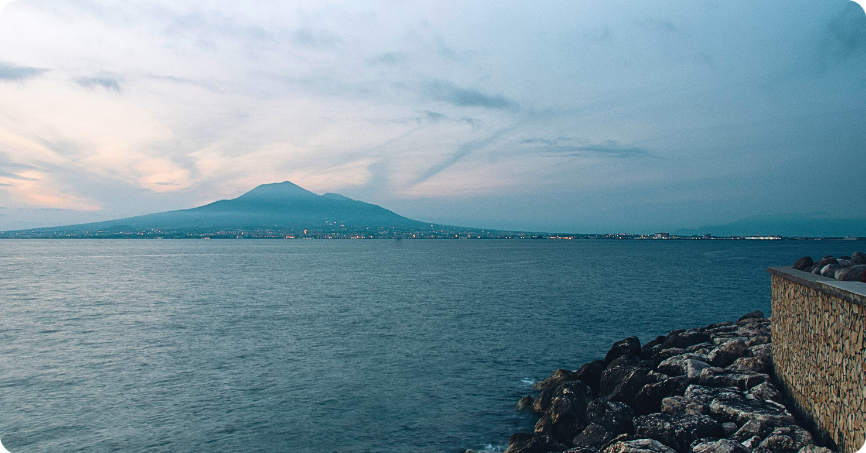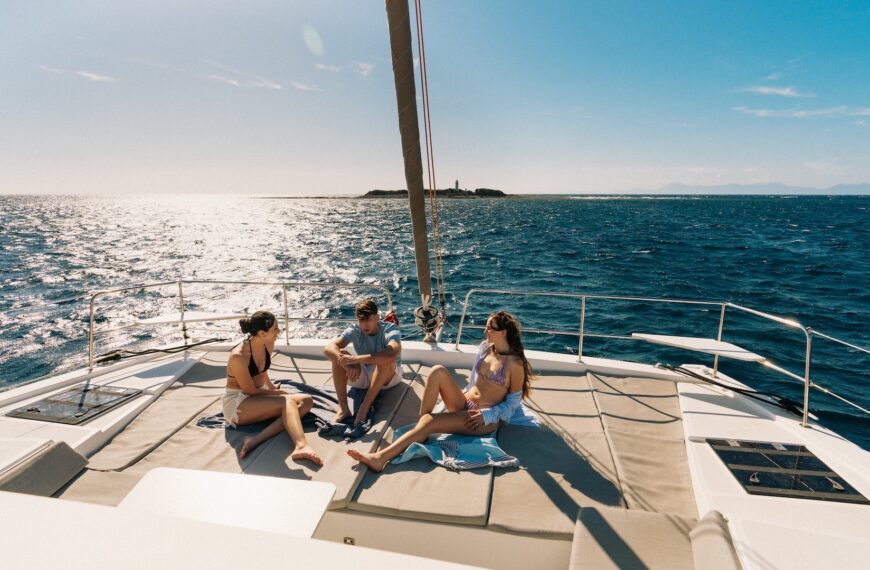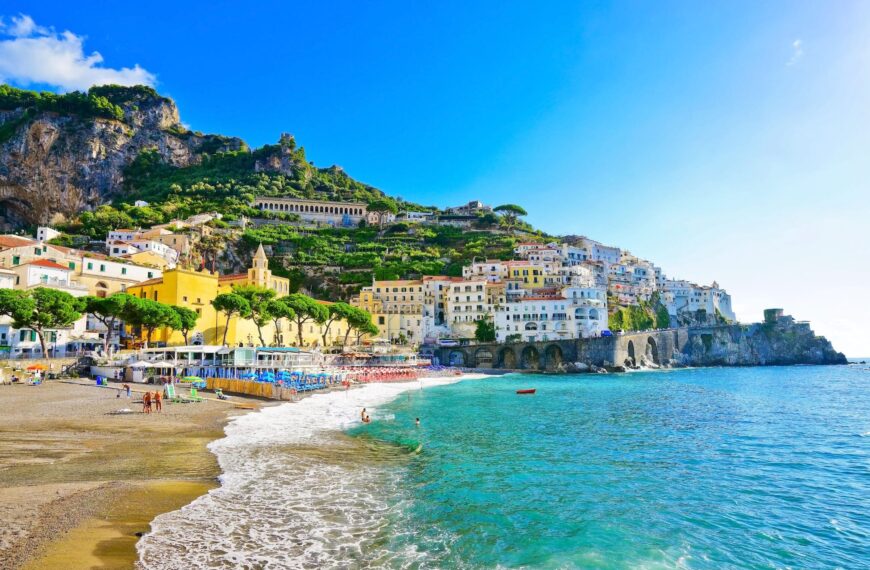After the splendor of the Amalfi Coast, navigating north from Salerno past the Sorrento Peninsula brings us to another paradise. Or rather, three: Ischia, Capri, and Procida. The main islands of the Campanian Archipelago in the Gulf of Naples are strikingly different yet equally enchanting, captivating the eyes, hearts, and souls of visitors. It’s unthinkable not to stop and explore their treasures.
Capri: More Than Shopping and the Piazzetta
About 12 miles from Positano and 2 miles from the Marine Protected Area of Punta Campanella, we encounter what is rightly considered the pearl of the Tyrrhenian Sea. Known to the Greeks and mentioned by Virgil in the Aeneid, Capri has been an exclusive destination since ancient Roman times. Emperor Tiberius famously built twelve villas here, though only the ruins of Villa Jovis remain.
Synonymous with elite vacations, Capri enjoys international renown for its exclusive atmosphere and breathtaking landscapes. Of the island’s two towns, Capri and Anacapri, the former is the more famous and frequented, with beaches, the renowned Piazzetta, luxury boutiques, the port, and vibrant nightlife. Anacapri, on the other hand, offers a quieter retreat for those who prefer a slower pace far from the crowds.
Among the must-see sights are the Faraglioni, three towering rock formations rising about 100 meters from the sea and accessible only by boat. For swimming nearby, there are two beach clubs: La Fontelina and Da Luigi.
Another highlight is the Natural Arch, a Paleolithic rock formation shaped into an arch over time. Located on the island’s easternmost point, it can be reached on foot from the Piazzetta or via Punta Tragara along the scenic Pizzolungo Path, a coastal trail with stunning views of the Faraglioni.
On the island’s opposite end, in Anacapri, lies the legendary Blue Grotto. Entry is by a small boat through a narrow archway, with a brief stop inside. Swimming is not allowed.For hiking enthusiasts, the Fortini Path is a must. Named for the three forts along its route—Orrico, Pino, and Mesola—this spectacular trail runs from the Blue Grotto to Punta Carena Lighthouse, offering stunning views of cliffs, promontories, and turquoise bays.
Ischia: The Green Island of Spas and Parks
Colonized by the Greeks and transformed into a prosperous trading city, Ischia remained a little-known fishing island until the mid-20th century, when it became an international tourist destination. Known as the “Green Island” for its unspoiled nature and trails popular with hikers, Ischia spans about 46 square kilometers and includes six municipalities: Barano d’Ischia, Casamicciola Terme, Forio d’Ischia, Ischia, Lacco Ameno, and Serrara Fontana.
Celebrated for its many spectacular thermal baths, gardens, parks, and mild climate, Ischia also boasts stunning beaches. Among the most famous is Maronti Beach, a three-kilometer stretch of sand and pebbles with crystal-clear waters. Located in Barano, it can be reached via a scenic winding road or by sea.
In Forio, the Bay of Sorgeto is a cove where seawater mixes with thermal springs, creating warm bathing opportunities even in winter. Accessible via a trail from the village of Panza or by boat, it is sheltered from the wind and sun-drenched in summer.
Near the entrance to Sant’Angelo d’Ischia lies Cava Grado Beach. This small, lesser-known sandy cove, surrounded by high tuff cliffs, features shallow, clear waters.For those seeking secluded, unspoiled spots, Varulo Beach in Lacco Ameno is accessible only by sea, while Scarrupata Beach to the south can be reached by boat or a steep path leading to its transparent waters and pebble shore.
Procida: The Island of Arturo and The Postman
The third jewel of the Campanian Archipelago is the small, lesser-known Procida. With its volcanic origins and picturesque colorful houses, Procida enchants visitors with an old-world charm far removed from glitz and fast-paced tourism. Best experienced at a leisurely pace, it offers a Mediterranean atmosphere of fishing boats and hilltop villages, along with stunning natural landscapes, historic sites, and crystal-clear beaches.
Many of its coves and beaches, accessible only by boat, are nestled within cliffs, offering tranquility, pristine waters, and clear seabeds. Among its more famous beaches, Chiaia Beach on the island’s eastern side stands out. With transparent waters and shallow depths, it can be reached by sea or via a panoramic staircase of 182 steps.
Known as “The Postman’s Beach” because of scenes filmed there for Il Postino, Pozzo Vecchio Beach is one of Procida’s most evocative. Its dark volcanic sand contrasts strikingly with the turquoise waters. It is accessible via stairs from the cemetery or a 20-minute walk from the port.
With pebbles and deep blue waters, Lingua Beach is considered one of Procida’s most wild and untouched. It is linked to L’Asino Beach, described by Elsa Morante in Arturo’s Island, and surrounded by lush vegetation atop high cliffs. This magical spot is equally captivating under the sun or when the sunset paints it in unforgettable shades of pink.





